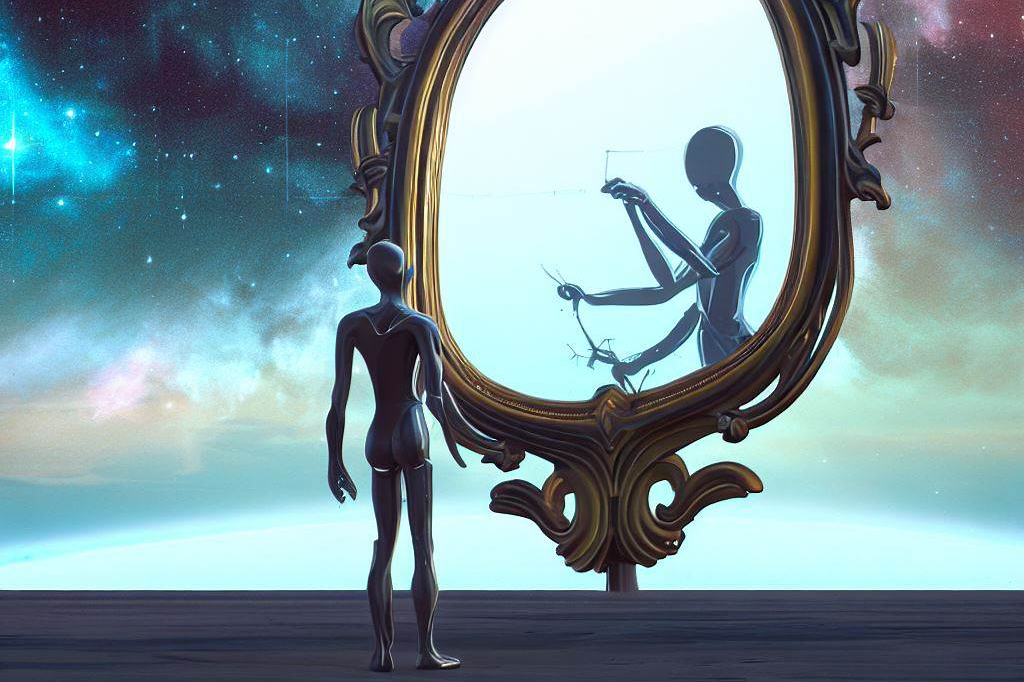Art has been an essential part of human civilization for thousands of years, and it has evolved throughout history. The emergence of new technologies has had a significant impact on traditional art forms, including painting, sculpture, and photography. The rise of artificial intelligence (AI) is the latest addition to the list of technological advances that have influenced art.
Definition of AI Art
AI art refers to artworks that are created using algorithms or machines that simulate human creativity.
These artworks are generated using various techniques such as deep learning, neural networks, and machine vision. AI algorithms can recognize patterns in data and generate new ideas from them, resulting in artwork that challenges traditional notions of creativity.
Brief History of AI Art
The history of AI art can be traced back to the 1960s, when artists started experimenting with computer-generated images. However, it wasn’t until the 1990s, when computers became more powerful, that AI-generated art gained popularity.
Harold Cohen’s AARON program was one such example that produced abstract drawings based on a set of rules programmed into it.
Another famous example is John Simon Jr.’s “The Painting Fool,” which used natural language processing to create paintings based on written descriptions.
In recent years, there has been a surge in interest in AI-generated art due to advances in machine learning and deep neural networks. Today’s AI artists use these technologies to create stunning works that reflect a new era in artistic expression – one where machines play an influential role in the creative process.
While AI-generated art may still be a relatively new concept for many people, it has already gained considerable attention within both the artistic community and the general public. With its capacity to challenge our notions about creativity and generate unique ideas beyond what humans alone could imagine, it is clear this growing field will continue shaping how we perceive the visual arts.
The Creative Potential of Machines
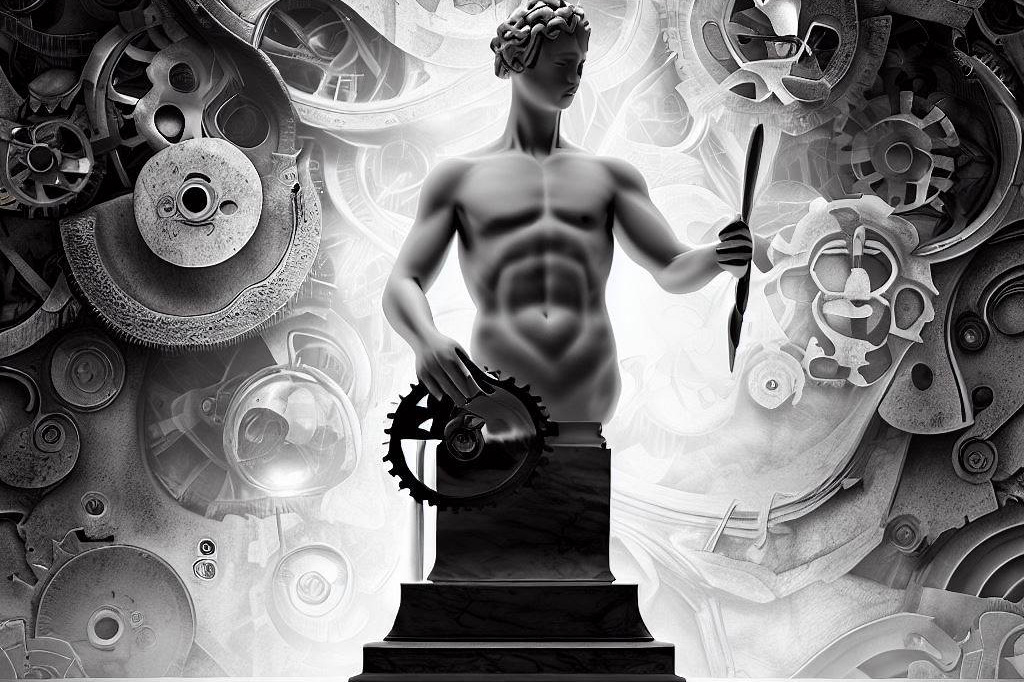
How machines can generate new and unique ideas
AI is capable of generating new and unique ideas by utilizing machine learning algorithms to analyze vast amounts of data. These algorithms identify patterns and relationships within the data, enabling machines to create works that are not only original but also unpredictable.
AI-generated art is often characterized by surreal imagery, unexpected colour combinations, and unconventional compositions that challenge traditional artistic norms.
One technique used in AI art is called “style transfer,” which involves training a machine on a set of images to identify their style or aesthetic elements. The machine can then apply these elements to other images, resulting in unique and unexpected combinations.
Another technique used is “generative adversarial networks” (GANs), which involve two neural networks working together: one generates images while the other evaluates them for authenticity. This process has led to the creation of highly detailed, photorealistic artwork.
Examples of AI-generated art
There are numerous examples of AI-generated art that demonstrate the creative potential of machines. One such example is “Unseen Faces,” a project by artist Trevor Paglen that uses GANs to generate portraits based on a dataset of over 30,000 faces collected from online databases. The portraits created by this project are hauntingly beautiful yet uncanny, with subtle imperfections that give them an otherworldly quality.
Another example is “AICAN,” an AI system developed by Rutgers University computer science professor Ahmed Elgammal.
AICAN analyzed over 80,000 artworks from different periods and genres before creating its own artwork inspired by these works. The resulting pieces are intricate and abstract, with bold colors and intricate patterns that reflect the diversity of styles found in human-created artwork.
There’s “The Next Rembrandt,” a project commissioned by Dutch bank ING that involved using AI to create a new portrait in the style of Rembrandt. The machine analyzed Rembrandt’s existing works to identify the elements that defined his style, then used this data to generate a new portrait that was so convincing it could have been painted by the master himself.
Overall, these examples demonstrate the immense creative potential of machines when it comes to generating new and unique artwork.
The Intersection of Art and Technology
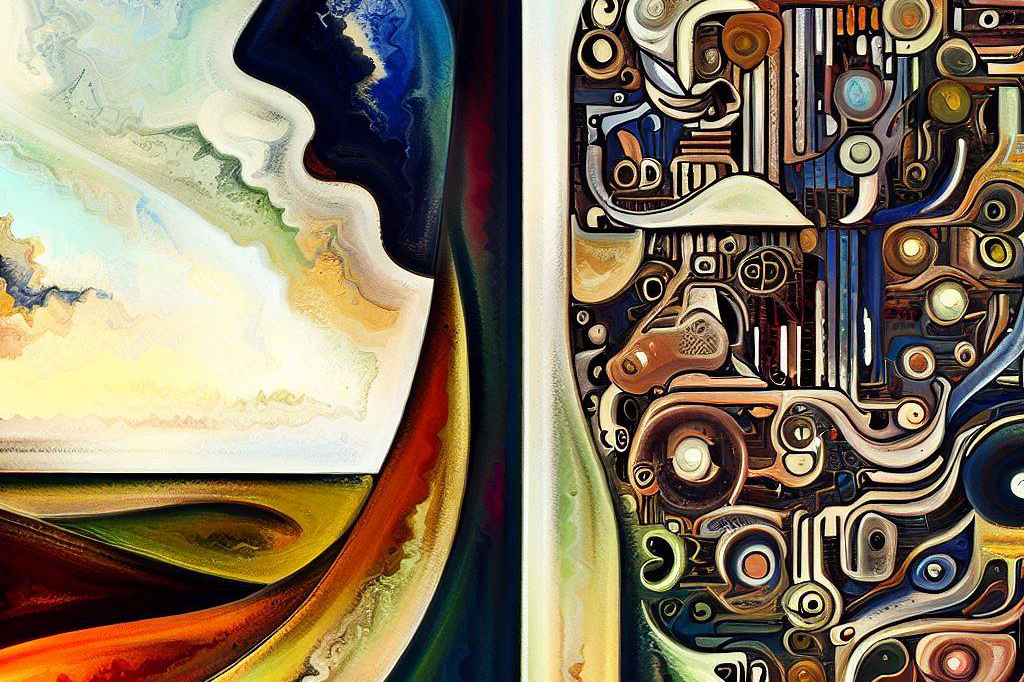
How technology has influenced art throughout history
The relationship between art and technology dates back to the earliest cave paintings. Throughout history, artists have used tools and techniques that were cutting-edge at the time, such as oil paint, perspective in Renaissance art, and photography in the 19th century.
These technological innovations allowed artists to create new forms of expression and to explore previously uncharted artistic territory.
In the 20th century, technology continued to play a major role in art movements such as Futurism, Dadaism, and Pop Art.
The advent of computers in the latter half of the century gave rise to digital art, which includes everything from pixelated graphics to interactive installations. With each new technological breakthrough, artists found new ways to push boundaries and challenge conventions.
The role of AI in the future of art
AI promises to take this relationship between technology and art even further. AI algorithms can analyze vast amounts of data and generate new ideas that humans may never have considered. This opens up exciting possibilities for artists looking to break new ground or explore uncharted territory.
One area where AI is already making an impact is in generative art – artwork created by algorithms rather than by human hands. Generative artwork can take many forms: from simple geometric patterns generated by mathematical formulas to more complex works that mimic natural forms or reflect social issues.
But AI’s potential goes beyond just generative artwork – it could also be used as a tool for collaboration between humans and machines. For example, an artist might use an AI algorithm as a starting point for a work of art, and then add their own creative input as they refine it.
Artistic innovation vs mass production
However, some critics worry that relying too heavily on machines could lead to a homogenization of artistic expression. If the same algorithms are used to generate art across multiple platforms, there’s a risk that everything starts to look the same. Furthermore, if AI-generated artwork becomes too prevalent and too successful, it could threaten the livelihoods of traditional artists who rely on selling their work.
On the other hand, proponents of AI in art argue that it has the potential to democratize creativity – giving more people access to tools and techniques that were previously reserved for a privileged few. Moreover, like any tool or medium in art, it’s up to the artist to use it creatively and innovatively – rather than simply relying on pre-existing algorithms and templates.
The Ethics of AI Art
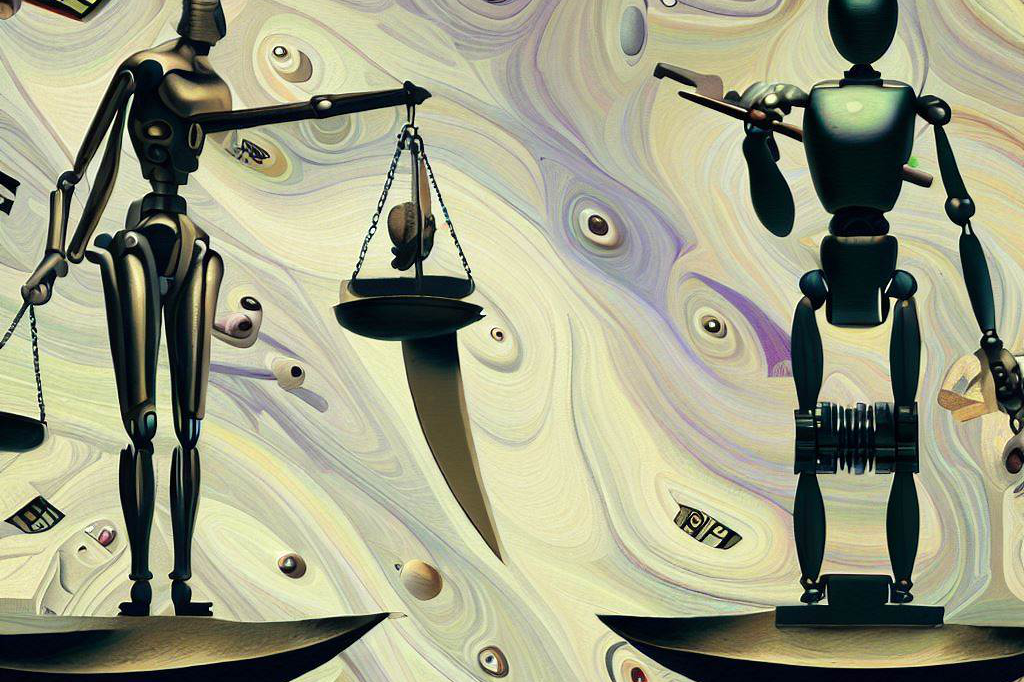
Who owns the rights to AI-generated artwork?
One of the most critical ethical concerns surrounding AI art is the question of ownership. Unlike traditional artworks, which are created by human artists who automatically hold copyright over their creations, AI art is generated by machines. As such, there is no clear legal precedent for determining who has ownership rights over AI-generated artwork.
In some cases, the answer may seem straightforward. For example, if an artist commissions an AI program to create a unique piece for them, they would likely be considered the owner of that work.
However, what happens when an AI program creates a piece without any human input or direction? In these situations, it becomes difficult to determine who should own the rights to the artwork.
Can machines truly be considered artists?
Another key ethical consideration related to AI art is whether or not machines can genuinely be considered artists in their own right. Some argue that because machines lack consciousness and subjective experience, they cannot produce truly creative works of art.
Others argue that this perspective reflects a narrow understanding of creativity and ignores the unique abilities of machines. After all, machines are capable of generating entirely new ideas and creating works that humans could never conceive on their own.
Ultimately, determining whether or not machines can be considered true artists depends on one’s definition of creativity and what qualities they believe are necessary for artistic expression. Regardless of where one falls on this issue, however, it’s clear that as technology continues to advance and more sophisticated algorithms are developed for creating art, this debate will only become more complex and nuanced.
The impact on traditional artists
Another important ethical consideration related to AI art is how its rise may impact traditional artists. Some worry that as machines become more proficient at creating works that are indistinguishable from those made by human hands (or even superior in some cases), there will be less demand for or appreciation for traditional forms of art.
Additionally, the rise of AI-generated art may exacerbate existing power imbalances in the art world, where access to expensive technology and specialized skills can be a barrier for many aspiring artists. As machines become more capable of creating high-quality work, some worry that they will further concentrate power and influence in the hands of a select few who have access to these tools.
At the same time, however, others argue that the rise of AI art could open up new opportunities for collaboration between humans and machines. Rather than being seen as a threat to traditional artists, AI-generated works could be viewed as a complementary tool that can enhance human creativity and expand artistic possibilities.
Challenges and Limitations
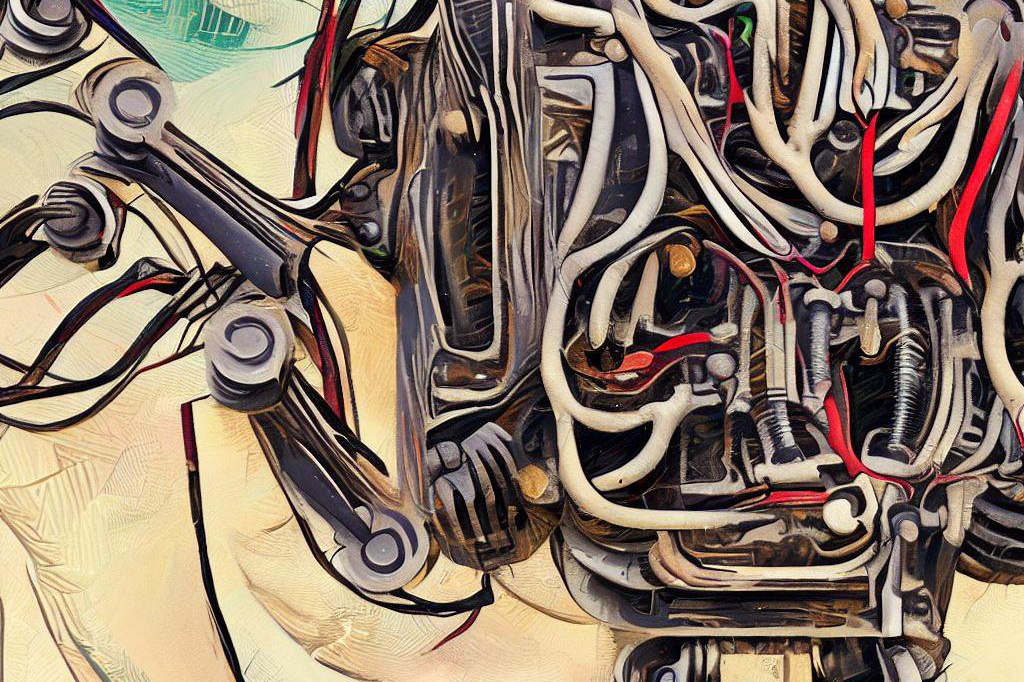
Technical Limitations in Creating AI Art
While the potential for AI in the art world is significant, it’s important to acknowledge its limitations. One primary challenge faced by AI-generated artwork is the technical limitations that come with creating it. Machines can only generate art based on the algorithms and data sets they are programmed with, which can limit their overall creativity.
Furthermore, machines still struggle with understanding abstract concepts such as emotions or cultural references, which are often crucial components of traditional art. Another limitation is the lack of physicality in AI-generated artwork.
Traditional artists have been able to manipulate physical materials to create tactile experiences for audiences that cannot be replicated through a digital medium. This may limit the appeal of AI-created content for people who value physical interaction with art.
The Impact on Traditional Artists
The rise of AI in the art world has raised concerns over its impact on traditional artists. While some argue that machines are simply augmenting traditional forms of creativity rather than replacing them entirely, others worry about how this technology could alter the landscape of contemporary art.
One potential impact is job displacement within creative fields. As machines become more advanced, they may be able to perform tasks once reserved for human artists, such as rendering visuals or generating new concepts.
This could lead to fewer job opportunities and a lower demand for human artists. Another potential impact is a homogenization of artistic styles and content due to machine learning algorithms favouring certain aesthetics over others based on data sets used during programming.
This could stifle diversity and innovation in contemporary art. Despite these challenges and limitations, there remains great potential for integrating AI into the creative process while still preserving traditional forms of artistic expression.
The Future of AI Art: Potential for New Forms of Artistic Expression
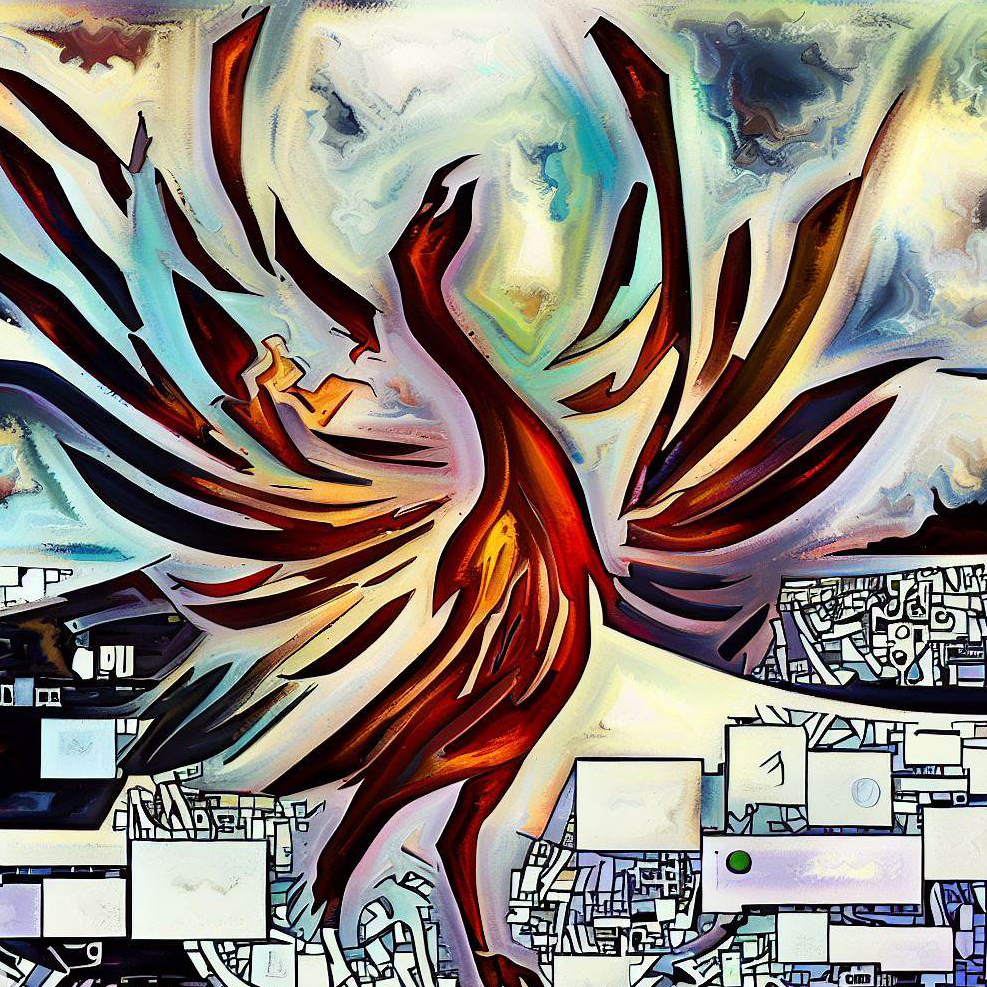
As AI technology continues to advance, we can expect to see new forms of artistic expression emerge. One such form is generative art, which involves using algorithms and data to create unique works of art.
Generative art has already gained traction in the digital world, with artists using code to create dynamic and interactive visuals. Another potential area for growth is in the realm of virtual and augmented reality.
With AI-generated content, artists can create immersive experiences that blur the lines between real life and digital worlds. This could lead to a whole new era of interactive installations and performances.
The possibilities for new forms of artistic expression are endless when it comes to AI art. From music composition to poetry generation, we can expect exciting developments as machines become more adept at creative tasks.
Integration with Other Industries: Fashion and Design
AI art isn’t just limited to traditional visual mediums like painting or sculpture – it has the potential to revolutionize other industries as well. One area where this is already happening is in fashion design. Fashion designers are experimenting with using generative algorithms to create unique patterns and designs that would be impossible for humans alone.
These designs can also be tailored specifically for individual customers based on their personal preferences. Similarly, interior designers are using AI-powered tools that can generate interior layouts based on specific criteria like room dimensions or desired style.
This allows them to quickly explore different design options without having to do extensive manual work. Overall, we’re seeing more and more industries open up to the possibilities presented by AI technology – not just as a tool for efficiency but also as a source of creativity and innovation.
Final Thoughts
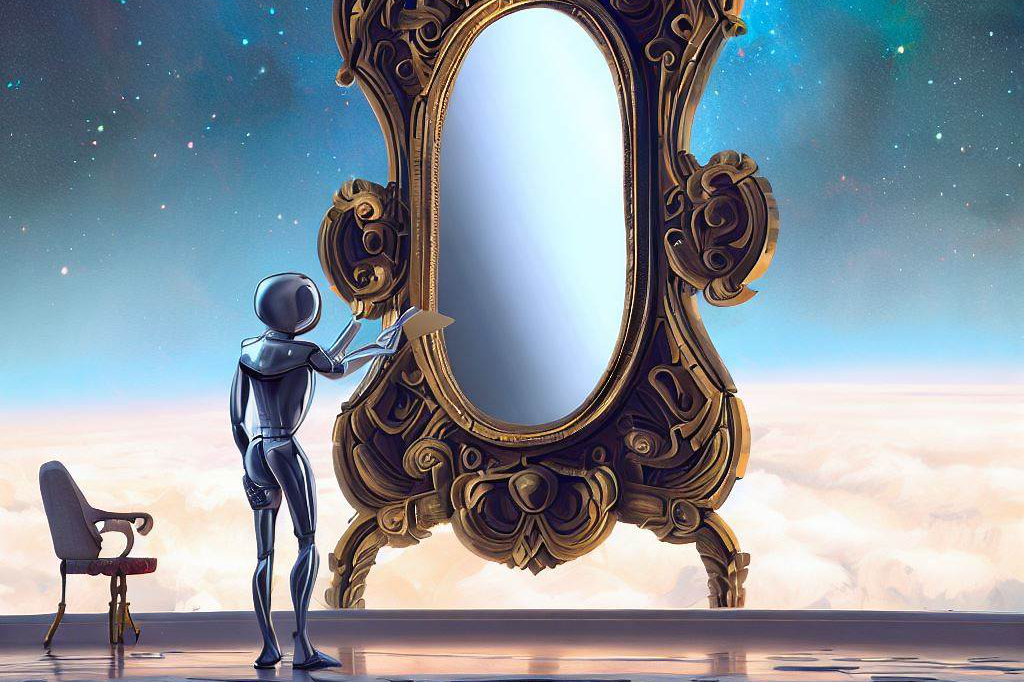
While some may view the rise of AI art as a threat to traditional forms of artistic expression, others see it as an opportunity for innovation and collaboration. The intersection between technology and art has always been a source of fascination for creatives throughout history; AI simply represents the next evolution in this relationship.
As we continue to explore the possibilities offered by AI-generated art, it will be essential to approach these technologies with both curiosity and caution. By doing so, we can ensure that machines are used ethically and effectively in service of human creativity – rather than as a replacement for it.
Ultimately, the rise of AI art offers an exciting glimpse into what lies ahead for artists and audiences alike. By embracing these technological advancements with an open mind and a willingness to experiment, we can unlock new frontiers in creative expression that were once unimaginable – inspiring us all along the way.

C M, a seasoned editor, journalist, and consultant, is deeply fascinated by the convergence of technology, space, and the future of humanity.
With a particular interest in transhumanism, futurology, and the philosophical and ethical dimensions of these domains, C M serves as the lead contributor to TranscendSphere and SpaceSpotlight.
When not penning insightful articles on these rapidly evolving fields, C M indulges in their love for podcasts and books, proudly embracing their status as a ‘Happy Nerd Extraordinaire!’

